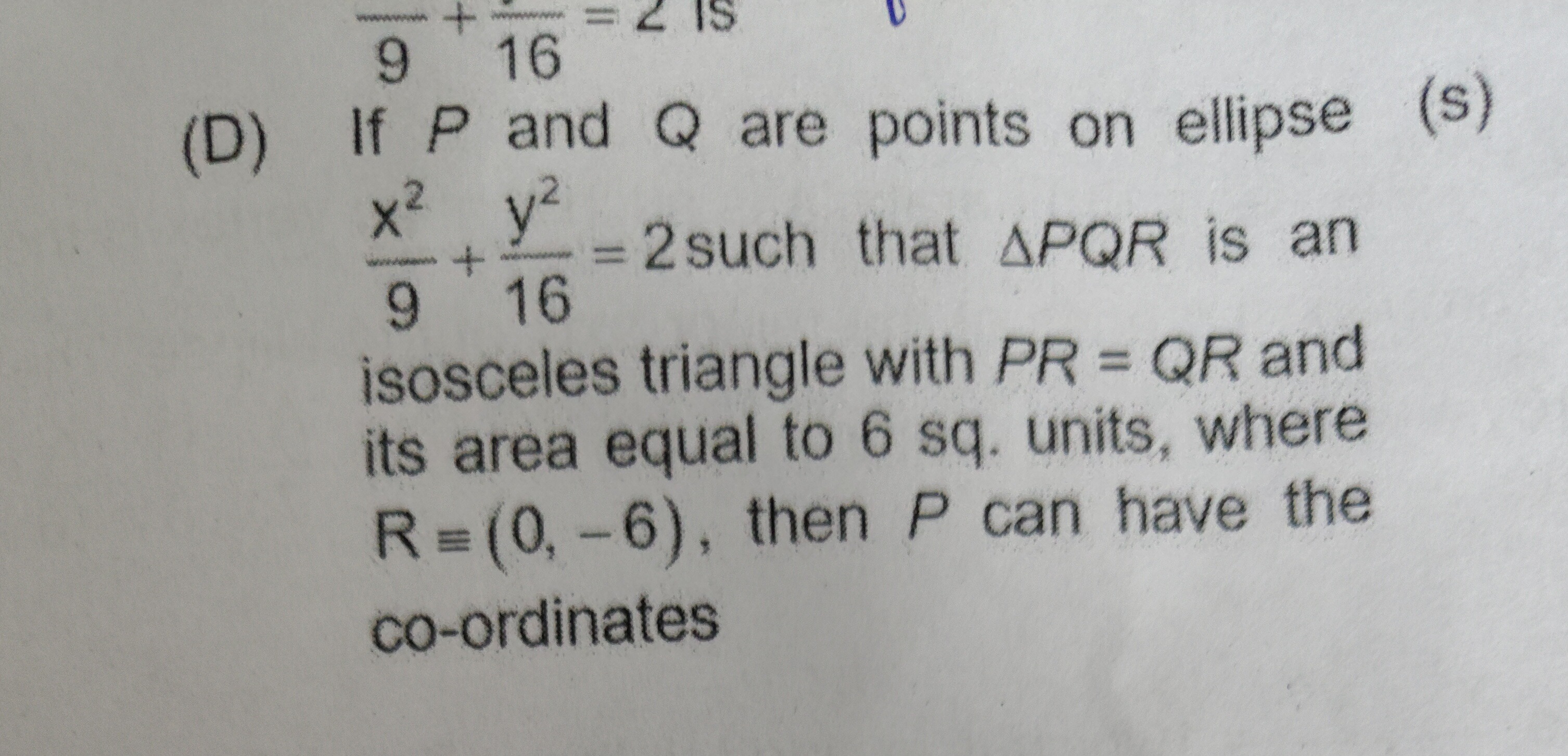Question
Question: If $P$ and $Q$ are points on ellipse (s) $\frac{x^2}{9}+\frac{y^2}{16}=2$ such that $\triangle PQR$ ...
If P and Q are points on ellipse (s) 9x2+16y2=2 such that △PQR is an isosceles triangle with PR=QR and its area equal to 6 sq. units, where R=(0,−6), then P can have the co-ordinates

(3,−4)
(−3,−4)
(3,4)
(32,0)
(3,−4) and (−3,−4)
Solution
The given ellipse equation is 9x2+16y2=2, which can be rewritten in standard form as 18x2+32y2=1.
The condition PR=QR implies that P and Q must be symmetric with respect to the perpendicular bisector of PQ, which passes through R(0,-6). Assuming P and Q are symmetric with respect to the y-axis (xQ=−xP, yQ=yP), the area of △PQR with R=(0,-6) is given by 6=21∣xP(yP−(−6))−xQ(−6−yP)∣. Substituting xQ=−xP, we get 12=∣xP(yP+6)−(−xP)(−6−yP)∣=∣xP(yP+6)+xP(yP+6)∣=∣2xP(yP+6)∣. Thus, ∣xP(yP+6)∣=6.
We need to find points (x,y) on the ellipse 18x2+32y2=1 that satisfy ∣x(y+6)∣=6.
Let's check the option (3,−4):
- Is it on the ellipse? 1832+32(−4)2=189+3216=21+21=1. Yes.
- Does it satisfy ∣x(y+6)∣=6? ∣3(−4+6)∣=∣3(2)∣=∣6∣=6. Yes.
Let's check the option (−3,−4):
- Is it on the ellipse? 18(−3)2+32(−4)2=189+3216=21+21=1. Yes.
- Does it satisfy ∣x(y+6)∣=6? ∣−3(−4+6)∣=∣−3(2)∣=∣−6∣=6. Yes.
Let's check the option (3,4):
- Is it on the ellipse? 1832+3242=189+3216=21+21=1. Yes.
- Does it satisfy ∣x(y+6)∣=6? ∣3(4+6)∣=∣3(10)∣=∣30∣=30. No.
Let's check the option (32,0):
- Is it on the ellipse? 18(32)2+3202=1818+0=1. Yes.
- Does it satisfy ∣x(y+6)∣=6? ∣32(0+6)∣=∣182∣=6. No.
Therefore, the coordinates of P can be (3,−4) and (−3,−4).
